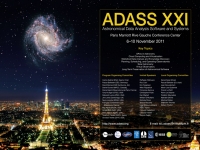Yannick Roehlly (CNRS/Laboratoire d'Astrophysique de Marseille), Denis Burgarella (LAM), Véronique Buat (LAM), Élodie Giovannoli (LAM) Stefan Noll (University of Innsbruck)
Abstract
CIGALE (Code Investigating GALaxy Emission) is a set of programmes used to study the evolution of galaxies by comparing modelled galaxy spectral energy distribution (SEDs) to observed ones from the far ultraviolet to the far infrared. CIGALE extends the SED fitting algorithm written by Burgarella et al. (2005, MNRAS 360, 1411). Stellar models (Maraston et al. 2005) are used for the stellar emission and the SED fitting is possible up to the far infrared using models and templates described by Dale & Helou (2002, ApJ 576, 159) and Siebenmorgen & Krügel. CIGALE is described in Noll et al. (2009, A&A 507.1793N).
Using photometric data of galaxies from far ultraviolet to far infrared, CIGALE makes it possible to derive galaxy properties with a high reliability by fitting the attenuated stellar emission and the related dust emission at the same time. Two fitting methods are available: a Bayesian-like analysis describes in Noll et al. (2009) and a Markov Chain Monte Carlo method describes in Serra et al. (2011).
CIGALE proved itself to be a valuable tool to study basic properties of galaxies in the near and distant Universe when UV-to-IR data are available.
Poster in PDF format
Paper ID: P131
Poster Instructions
|

